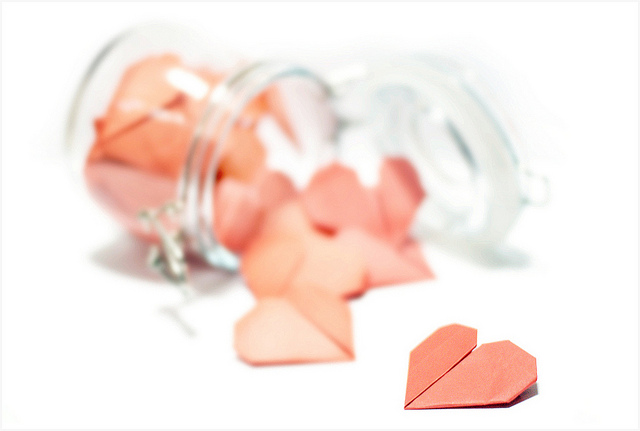I was having an amazing day. I started with a morning yoga session, went off to an inspiring workday with clients I love and had a great lunch date with my husband. Then I got the phone call that would derail my day in five minutes flat.
I had apparently forgotten to pay a parking ticket (like two years ago) and the collection agency was calling to say that not only did I owe about 10 times the original amount, my credit rating had also been affected. That was all it took because financial anxiety is my Kryptonite.
Raised in a family that was usually on a budget and by a dad who was an accountant, I constantly worried about money, credit ratings and financial waste. How could I be so stupid? I’m supposed to be a responsible adult who doesn’t put parking tickets in her glove compartment and then forget to pay them for two years.
After calming myself down with some deep breathing, I was able to start putting things in perspective. It was going to be okay. After all, it was just one parking ticket and no one is perfect. I had to forgive myself and move on.
But why did it seem easier said than done? The answer is our brain’s negativity bias, a built in protective mechanism to help us avoid threats to survival. We all have it and research now shows it starts as early as age three. Of course it was necessary when we were cavemen and our physical safety was under constant threat, but in modern life, it can wreak havoc on the way we negatively interpret events in our daily lives.
I catch myself sometimes getting caught by my brain’s negativity bias when things don’t go as planned, like repeatedly berating myself for forgetting to pay that ticket, beating myself up for missing a few days of yoga practice, or having that chocolate cake while I’m trying to watch my weight, despite doing yoga and eating healthy most days.
New studies prove that negative information tends to influence our decisions and judgments more strongly than comparably extreme positive information. And noticing the “negative” isn’t always a bad thing. This tendency to pay attention to, learn from and use negative information more than positive information can be adapted to achieving goals both personally and professionally, because fear of the negative is a powerful motivator.
However, our brain’s negativity bias evolved primarily to protect us from physical dangers like sabre-toothed tigers, not to deal with the constant worries and perceived mental threats of modern life, such as feeling pressure to instantly respond to all to work emails. If we constantly attend to the negative and don’t train our brain away from this tendency, over time it can suck the joy and passion away from our daily lives and make us feel guilty and anxious, since there’s no end to the things we can potentially worry about in hectic modern life.
Positive Psychology Practices To Beat The Negativity Bias
The good news is there’s a way out of negative thinking biases and there are ways to get unstuck from the brain’s bias toward paying more attention to the negative. One that I do at home with my husband to train our brains to pay more attention to positive input by keeping a grateful jar. We write down three things we were grateful for that day and put them in our grateful jar (we have one by our bed and one in our office) so we can read them when we feel down or when we need some inspiration and a reminder of how awesome 90 percent of our days are. This single daily habit alone has been proven in the research to change the brain’s ability to escape this negativity bias.
Research Proof for the Grateful Jar
The grateful jar has also been used by positive psychology researchers at Penn State University, who call it the “three good things.” In this version of the practice, every night after work, we write down three good things that happened that day and the reason they may have happened. My husband and I tend to do this out loud before bed.
One thing we’ve noticed from doing our own grateful jars and from having my clients do them too, is that sometimes we tend to chalk up our three good things to pure luck. This may be a sign we need to focus on being kinder to ourselves because we’re likely underestimating our own ability to make good things happen. Believing that we can make good things happen provides us with a sense that we’re in control over how our lives are going and it helps us roll with the punches with a sense of ease.
Start Busting Negative Thinking Now
So tomorrow morning on the way to the office, start collecting moments of goodness for your own grateful jar. You may find a hipster holding his Boo look-a-like dog in a dinosaur outfit outside your local coffee shop on the way to work. (That actually happened to me recently, I swear!) Nothing seems overwhelming once you’ve started your day with Dino-Boo in your grateful jar.
Once I started shifting my brain’s negativity bias and start noticing all the hidden gems in my normal busy day, I realized just how good life is.
Author: Dr. Dani Gordon, MD ABIHM
Editor: Evan Yerburgh
Image: Flickr







Read 0 comments and reply